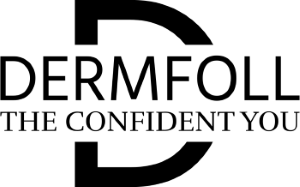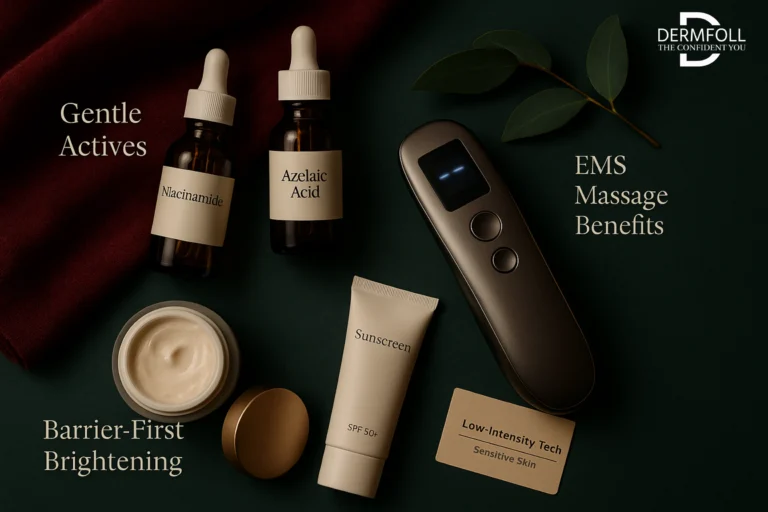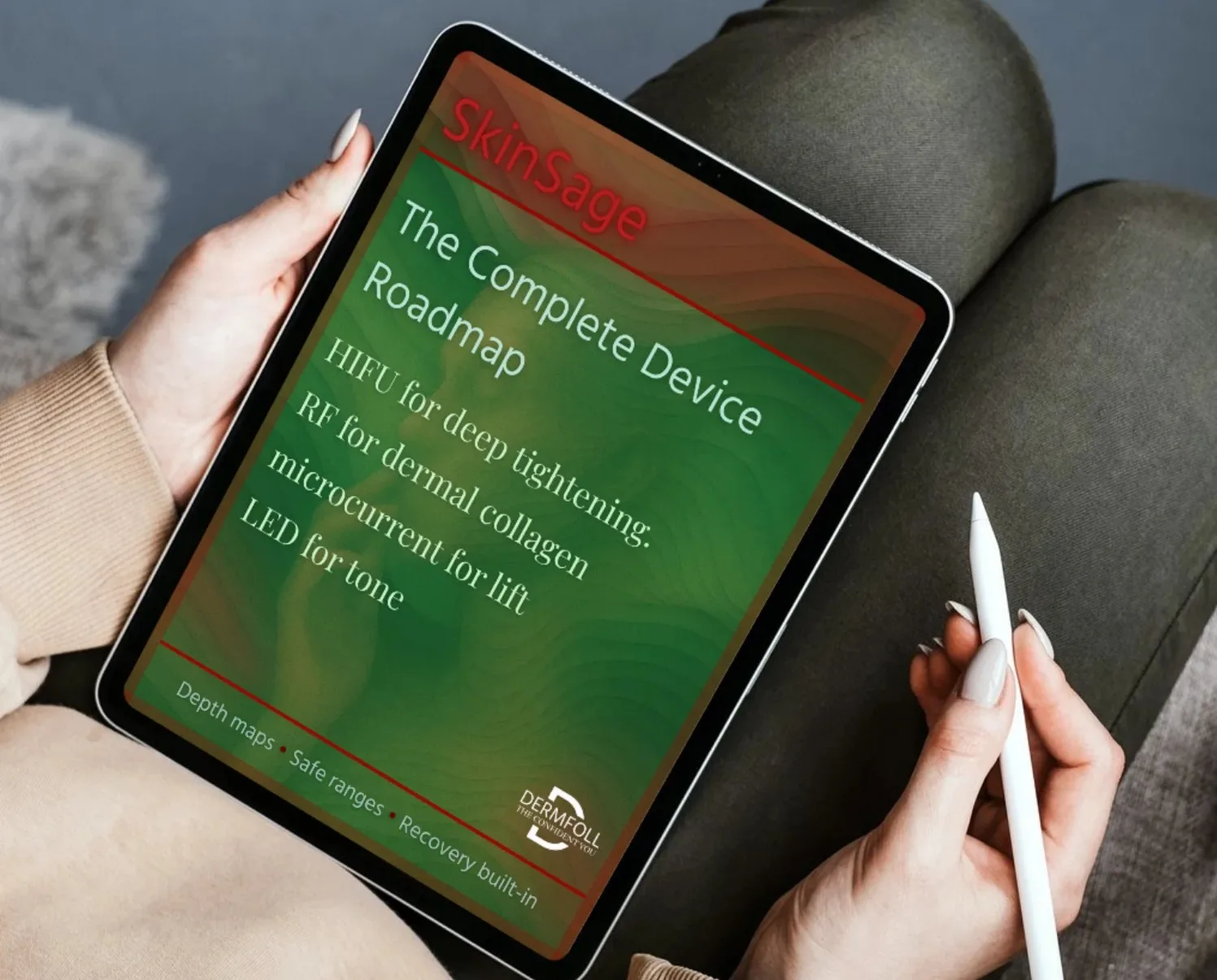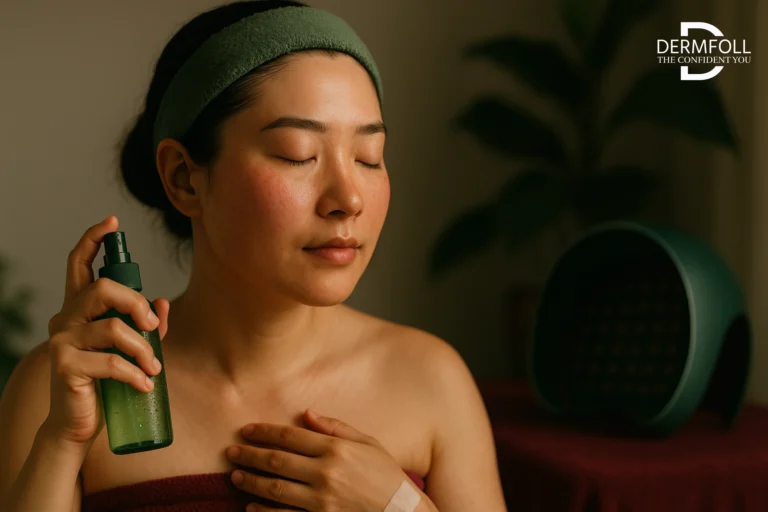Setting Protocols for PIH-Prone Sensitive Skin
When it comes to sensitive skin with post-inflammatory hyperpigmentation, the key is pacing, not pushing. Let’s walk through how to use EMS and radio frequency in a way that’s supportive, not overwhelming.
How to Balance RF Heat and EMS Massage Benefits
Begin with short, alternating sessions
Avoid full dual-mode overlap until tolerance is clear
Start slow. Really slow. Try alternating EMS and radio frequency sessions rather than using them together from the start.
Your skin needs a chance to adjust, and if it’s already sensitive or reactive, the safest bet is to build tolerance gradually.
Frequency, Duration, and Intensity Guidelines
Once or twice a week
Low RF settings (~40°C max)
EMS at lowest visible contraction threshold
Use your device once or twice weekly at most, this helps avoid inflammation that could worsen pigmentation.
Keep RF settings low, around 40°C max, and for EMS, just go with the lowest setting where you can see a little muscle movement. More isn’t better here, it’s about consistent, gentle progress.
Why “Less Is More” for Hyperpigmented, Reactive Skin
Emphasize skin calm > aggressive stimulation
Barrier-first mindset even in brightening routines
Skin that’s already dealing with PIH and sensitivity doesn’t need another hard push. So keep things mellow. Focus on calming your skin first, think hydration, barrier repair, and minimal irritation.
That’s your base. Only then can you build toward a clearer, more even tone, without setbacks.
Prepping + Calming Skin Around RF and EMS Sessions
Let’s pause for a sec.
Before we get too deep into settings and schedules, it’s worth talking about what really makes or breaks your results: how you prep and care for your skin before and after using EMS and radio frequency devices.
These steps are especially crucial when you’re dealing with pih skincare needs and face skin sensitive to heat.
Before treatment, keep it clean and simple:
Gently cleanse with a mild, fragrance-free cleanser.
Skip serums, oils, and active agents. Skin should be dry and product-free (aside from conductive gel).
Use a conductive gel that’s non-comedogenic, fragrance-free, and maybe even boosted with calming ingredients like ceramides or licorice.
Pre- and Post-Treatment Strategies for Safe Brightening
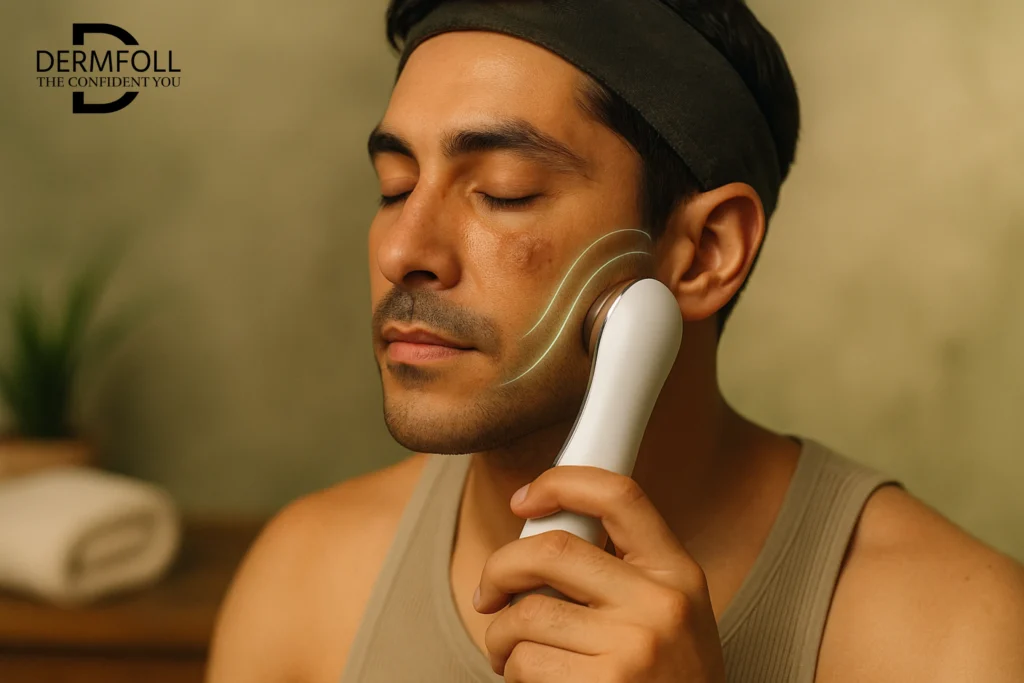
What to Apply Before and After to Prevent Flares
If you’re working with ems and radio frequency, giving your skin the right support before and after is key, especially when you’re also focused on how to prevent PIH.
Go for ingredients that comfort and strengthen:
- Niacinamide, Centella Asiatica, azelaic acid, and ceramide-rich moisturizers are all great post-treatment allies.
- These soothe, hydrate, and quietly help even out tone over time.
- What to avoid? Steer clear of exfoliants and retinoids right before or after use. They’re too stimulating when paired with energy-based treatments and can easily irritate.
Choosing the Right Conductive Gel
The conductive gel you use during treatment isn’t just a sidekick, it matters a lot, especially when using ems massage benefits for circulation and lymphatic drainage.
Look for formulas that are:
- Fragrance-free, non-comedogenic, and designed to boost hydration (think hyaluronic acid or glycerin).
- Some even contain licorice extract or vitamin C, which can offer an extra brightening kick, great if you’re trying to gently even out tone without harsh topicals.
What to Absolutely Avoid
A few things are best kept far from your skin during RF or EMS sessions:
- Occlusive agents like petrolatum, especially before treatment, can trap heat or interfere with energy delivery.
- Skip anything that might increase heat sensitivity or provoke inflammation. That includes certain actives, strong acids, or even essential oils.
- If your skin is easily triggered or rosacea-prone, play it safe and listen to what it’s telling you, your long-term glow will thank you.
Pigmentation Fading Is a Slow Game
post-inflammatory hyperpigmentation doesn’t vanish overnight. If you’re starting this journey, it’s important to set realistic expectations. On average, you’re looking at about 6 to 12 weeks of consistent care before noticing visible changes.
And even then, some spots may take longer to fade, especially if they’re deeper.
That’s why the combined approach of ems radio frequency works so beautifully, it’s gentle, layered, and works from below the surface without overloading your skin.
Also investing in a journal to track your progress can go a long way.
Just remember: healing takes time. Your skin’s not a machine, it’s a living, reactive organ. So give it grace.
Go slow. Be consistent. Trust the process.
CONCLUSION
So, what have we really learned here?
- That EMS massage benefits and radio frequency don’t have to be off-limits if you’ve got sensitive skin or are navigating the stubborn reality of PIH.
- That with the right settings, low heat, minimal current, and a little patience, EMS massage benefits go beyond facial toning. They help improve circulation, calm inflammation, and support pigment fading from within.
- And most importantly, we’ve seen that knowing how to prevent PIH isn’t just about avoiding triggers. It’s about listening to your skin, supporting its barrier, and letting time and consistency do their work.
There’s no quick fix here. But there is a path forward.
And it doesn’t involve layering five acids or jumping into intense treatments.
It’s about building a skincare rhythm that your skin can actually handle, and benefit from.
As we wrap up this two-part series, I hope you’re feeling more confident, better equipped, and a little more hopeful. Because when it comes to pih skincare, small steps, done gently and consistently, do add up
